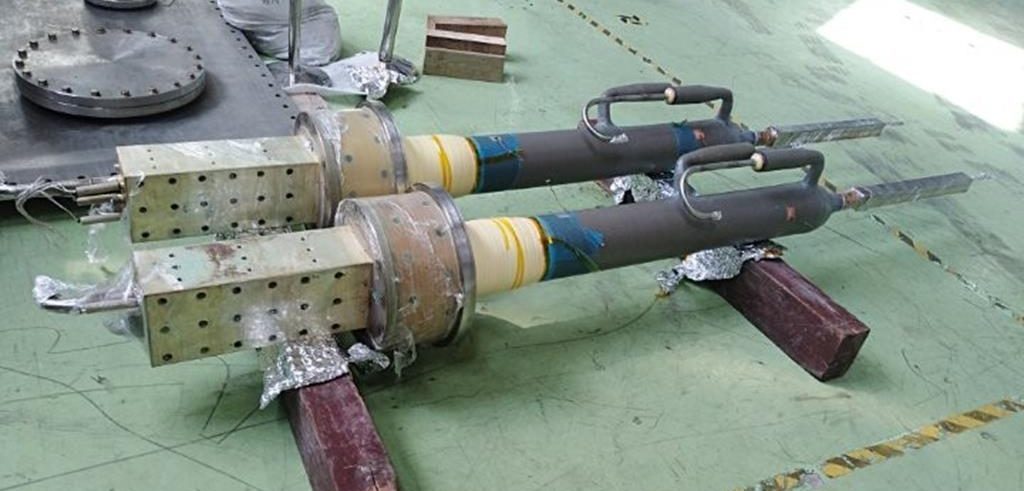
High Temperature Superconductor (HTS) current leads are a key technology of the ITER magnet system, transmitting the huge currents (up to 68 kA) from the power supplies at room temperature to the low temperature superconducting coils installed in the fusion reactor. ITER’s large coils will need 60 current leads located at the end of the magnet feeders, thus operating in a lower magnetic field and reducing the heat load compared to conventional current leads. In fact, the higher cost of HTS current leads is by far compensated by the savings in the operation of the cryoplant.
The HTS current leads for the ITER Tokamak are procured by the Chinese Domestic Agency through the Institute of Plasma Physics (ASIPP) in Hefei, China. After a string of successful tests of current lead prototypes carried out by Chinese contractors during 2015 and 2016, the series manufacturing has been launched with the recent completion of the three current leads types (correction coil, TF coil, PF/CS coils) first series. This constitutes an important milestone in the way to turn nuclear fusion into a reliable source of clean energy.

HTS current leads are essential not only in fusion devices, but to feed the superconducting coils in particle accelerators as well. This is one example in the vast variety of HTS applications, hence the need of developing simulation tools enabling a comprehensive understanding of superconducting devices.
Our Fusion group at BSC is committed to this goal and is currently working in the development of computational tools able to reproduce the multiphysics of large HTS devices by resorting to advanced High-Performance Computing techniques.
Source: ITER
